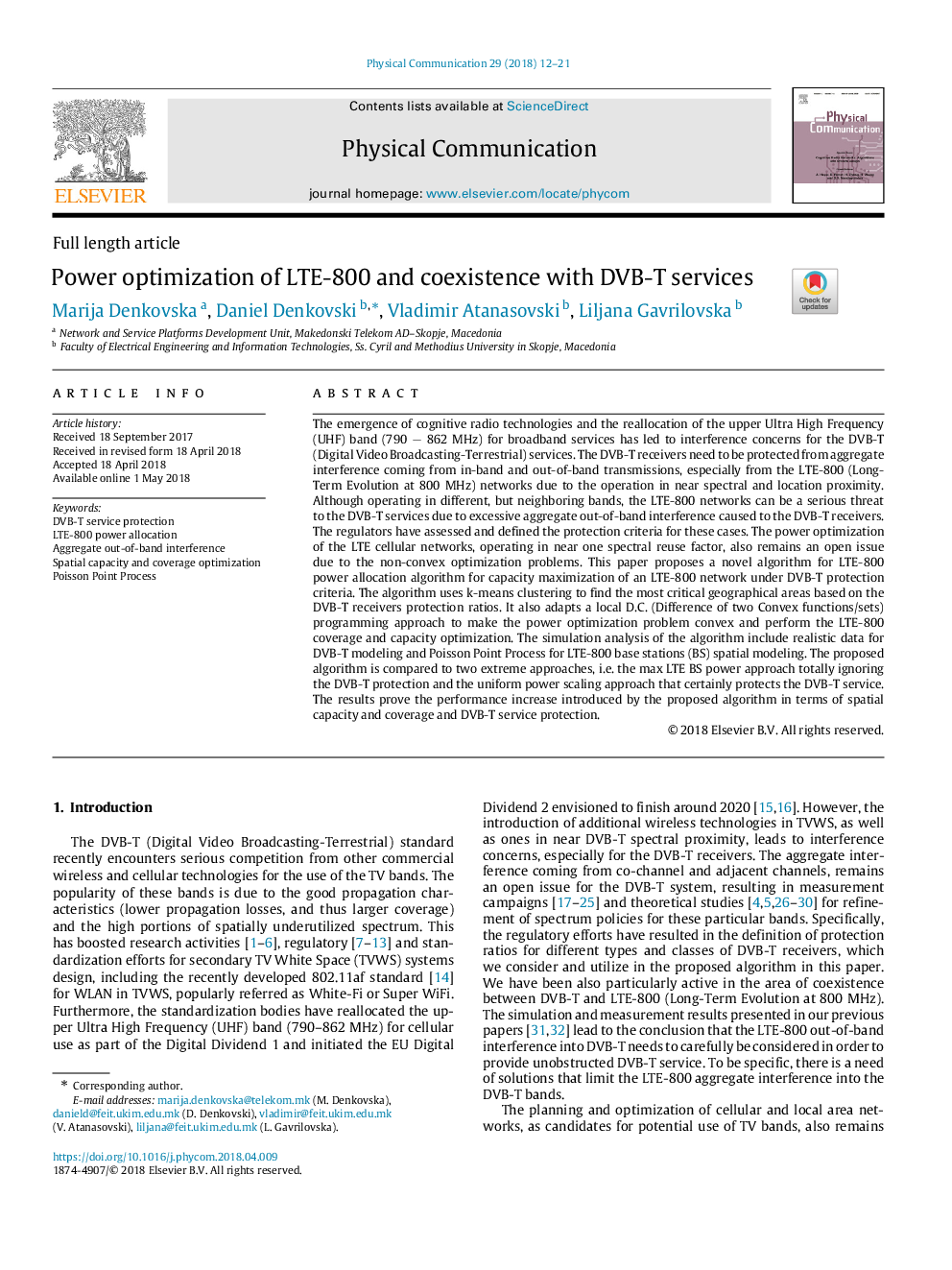| Article ID | Journal | Published Year | Pages | File Type |
|---|---|---|---|---|
| 6888941 | Physical Communication | 2018 | 10 Pages |
Abstract
The emergence of cognitive radio technologies and the reallocation of the upper Ultra High Frequency (UHF) band (790â862 MHz) for broadband services has led to interference concerns for the DVB-T (Digital Video Broadcasting-Terrestrial) services. The DVB-T receivers need to be protected from aggregate interference coming from in-band and out-of-band transmissions, especially from the LTE-800 (Long-Term Evolution at 800 MHz) networks due to the operation in near spectral and location proximity. Although operating in different, but neighboring bands, the LTE-800 networks can be a serious threat to the DVB-T services due to excessive aggregate out-of-band interference caused to the DVB-T receivers. The regulators have assessed and defined the protection criteria for these cases. The power optimization of the LTE cellular networks, operating in near one spectral reuse factor, also remains an open issue due to the non-convex optimization problems. This paper proposes a novel algorithm for LTE-800 power allocation algorithm for capacity maximization of an LTE-800 network under DVB-T protection criteria. The algorithm uses k-means clustering to find the most critical geographical areas based on the DVB-T receivers protection ratios. It also adapts a local D.C. (Difference of two Convex functions/sets) programming approach to make the power optimization problem convex and perform the LTE-800 coverage and capacity optimization. The simulation analysis of the algorithm include realistic data for DVB-T modeling and Poisson Point Process for LTE-800 base stations (BS) spatial modeling. The proposed algorithm is compared to two extreme approaches, i.e. the max LTE BS power approach totally ignoring the DVB-T protection and the uniform power scaling approach that certainly protects the DVB-T service. The results prove the performance increase introduced by the proposed algorithm in terms of spatial capacity and coverage and DVB-T service protection.
Keywords
Related Topics
Physical Sciences and Engineering
Computer Science
Computer Networks and Communications
Authors
Marija Denkovska, Daniel Denkovski, Vladimir Atanasovski, Liljana Gavrilovska,
